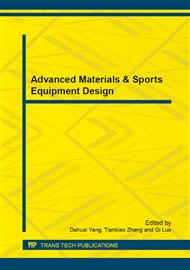p.3
p.9
p.13
p.19
p.25
p.31
p.37
p.42
Comparison of Effective Thermal Conductivity of Hollow Fibers by Prediction Models and FE Method
Abstract:
In order to evaluate the effective thermal conductivity (ETC) of hollow fibers, three theoretical models (the parallel/series model, quadrate model and cylindrical model) and finite element method carried out by ANSYS simulation were studied. The results showed that different theoretical models gave quite different effective thermal conductivities. The results from theoretical models and simulations were completely identical in the case when models had regular structures and the heating surface was the same kind of material. The ETC of hollow fibers from all of theoretical models and simulations decreased exponentially with the increase of air volume content. In addition, the ETC of hollow fibers from the first theoretical model were a bit higher than the results from simulation, whereas those from the second theoretical model were smaller than the results from simulation, and those from the third theoretical model were identical to the results from simulation.
Info:
Periodical:
Pages:
3-8
Citation:
Online since:
October 2013
Authors:
Price:
Сopyright:
© 2014 Trans Tech Publications Ltd. All Rights Reserved
Share:
Citation:


